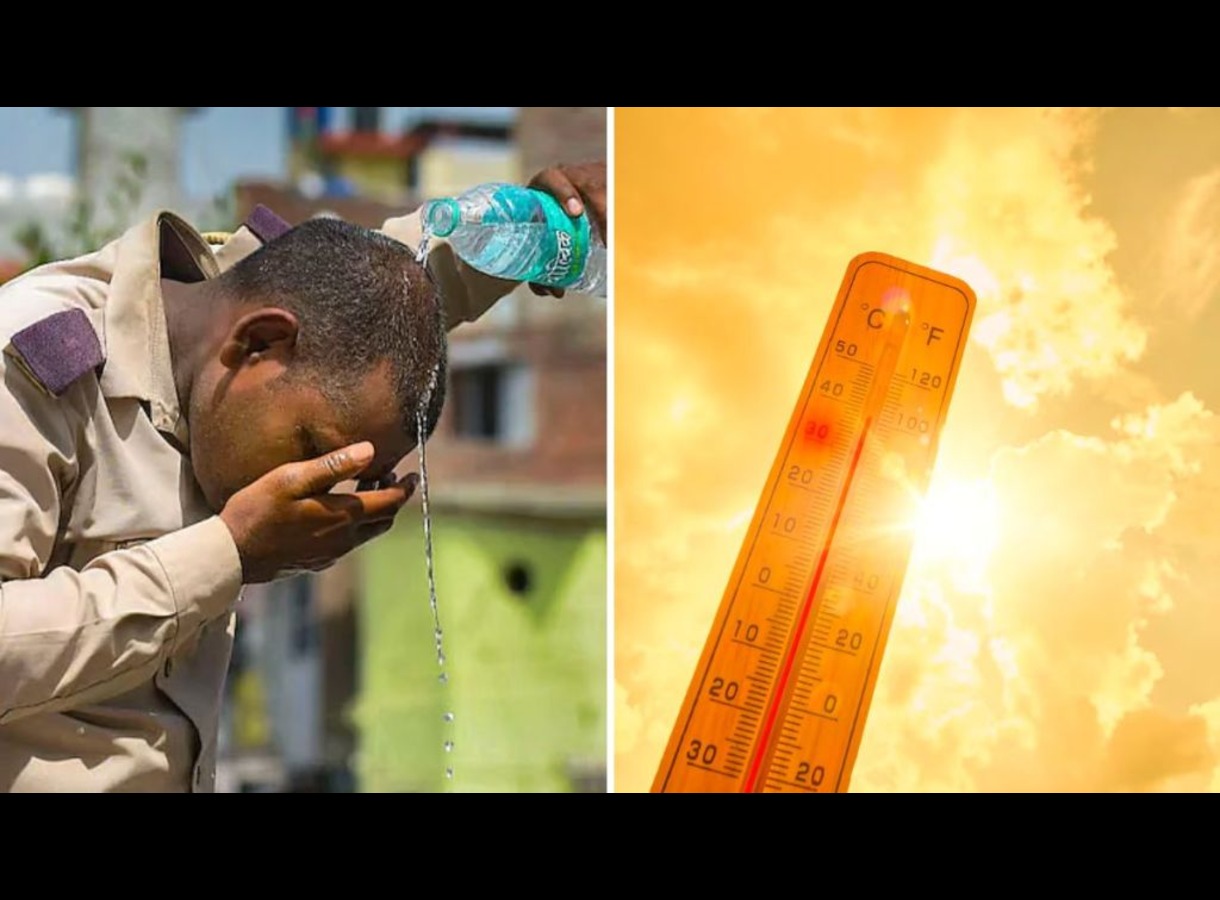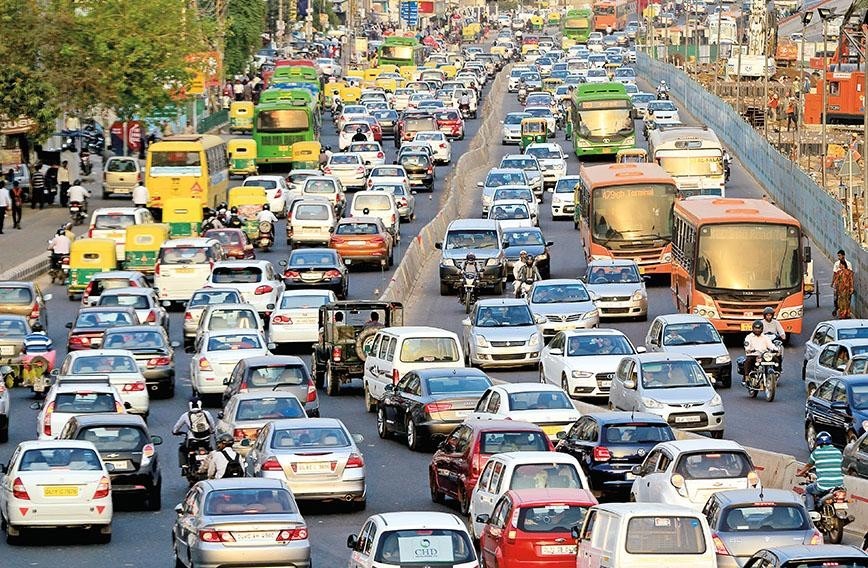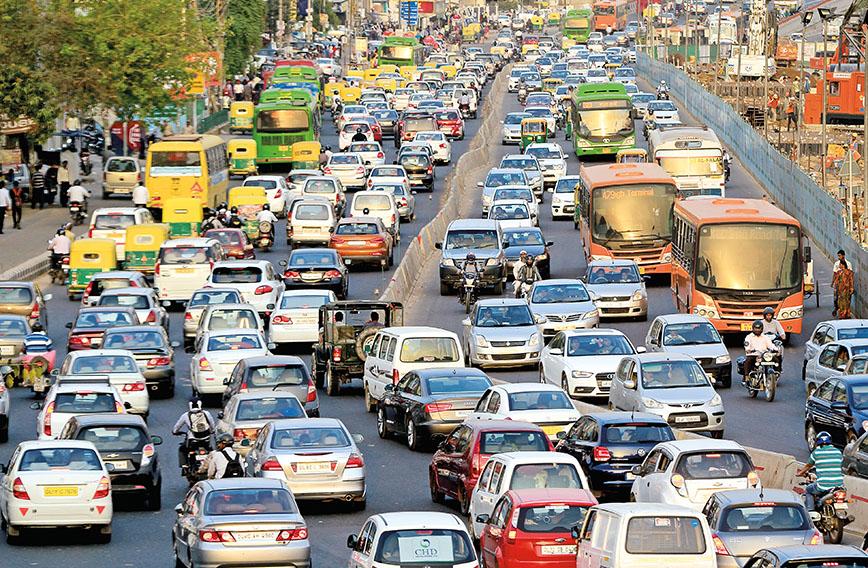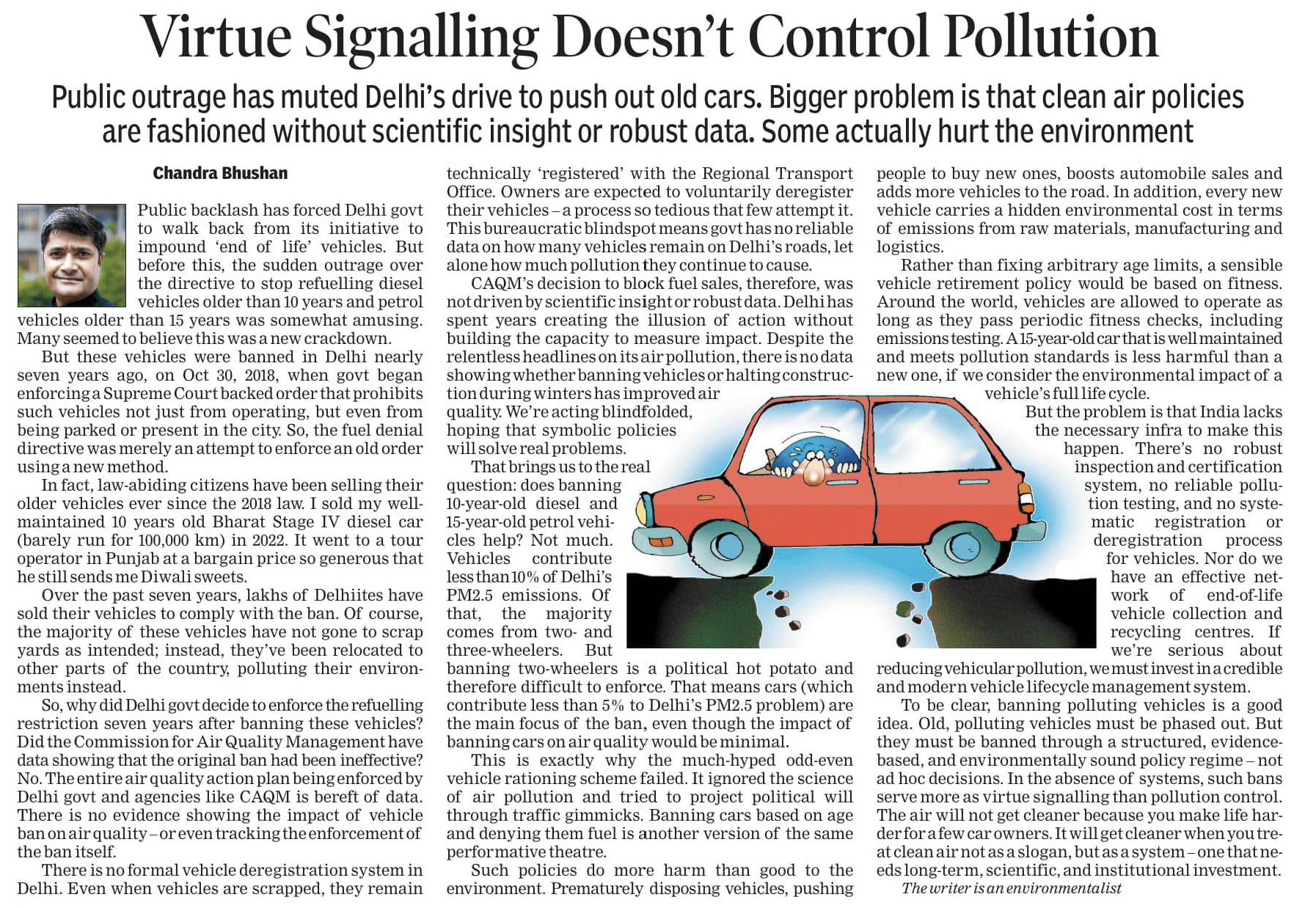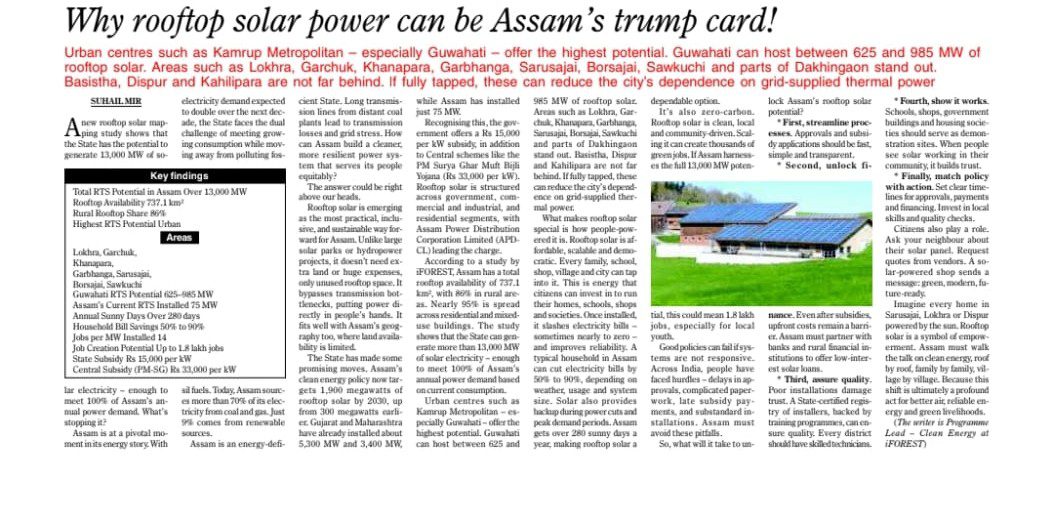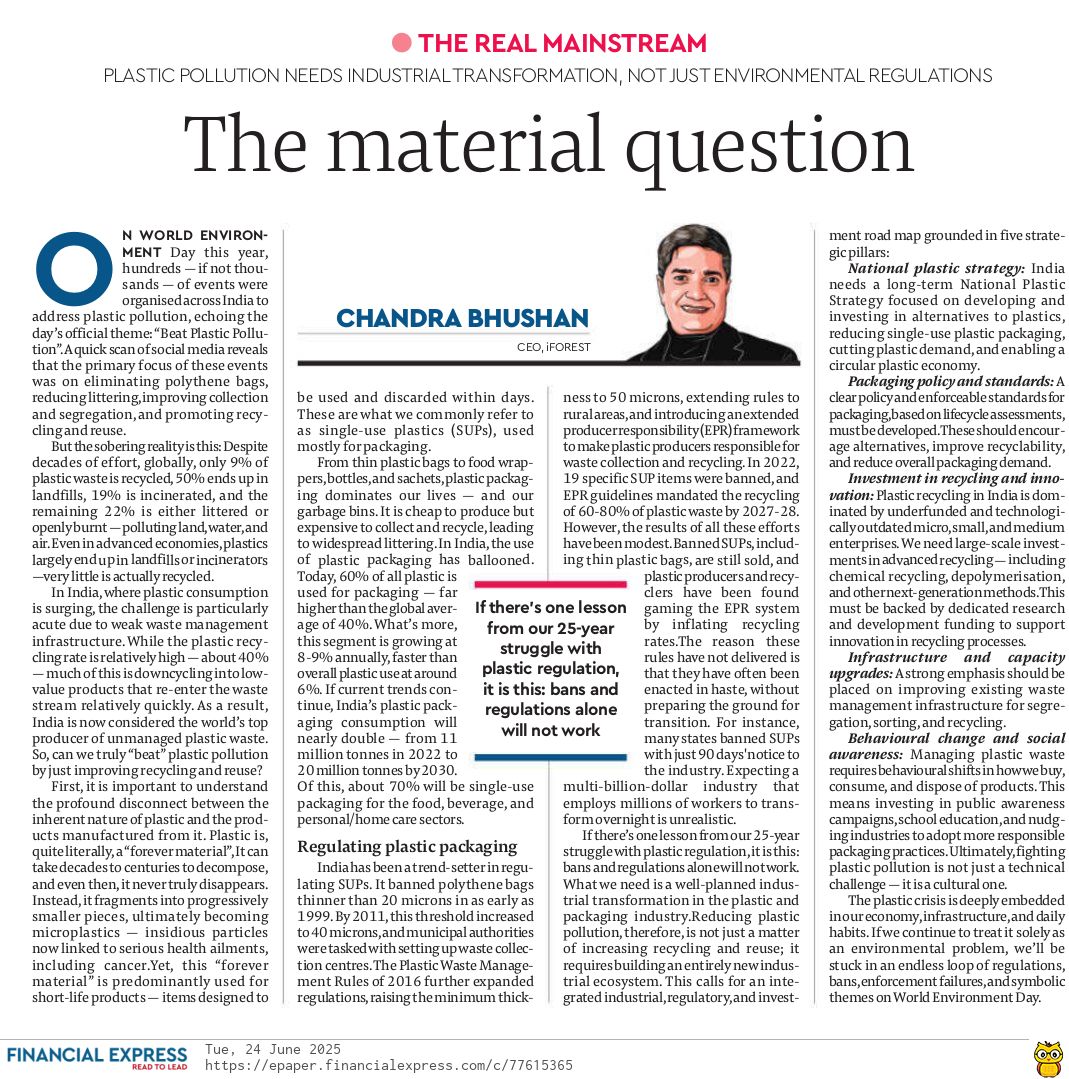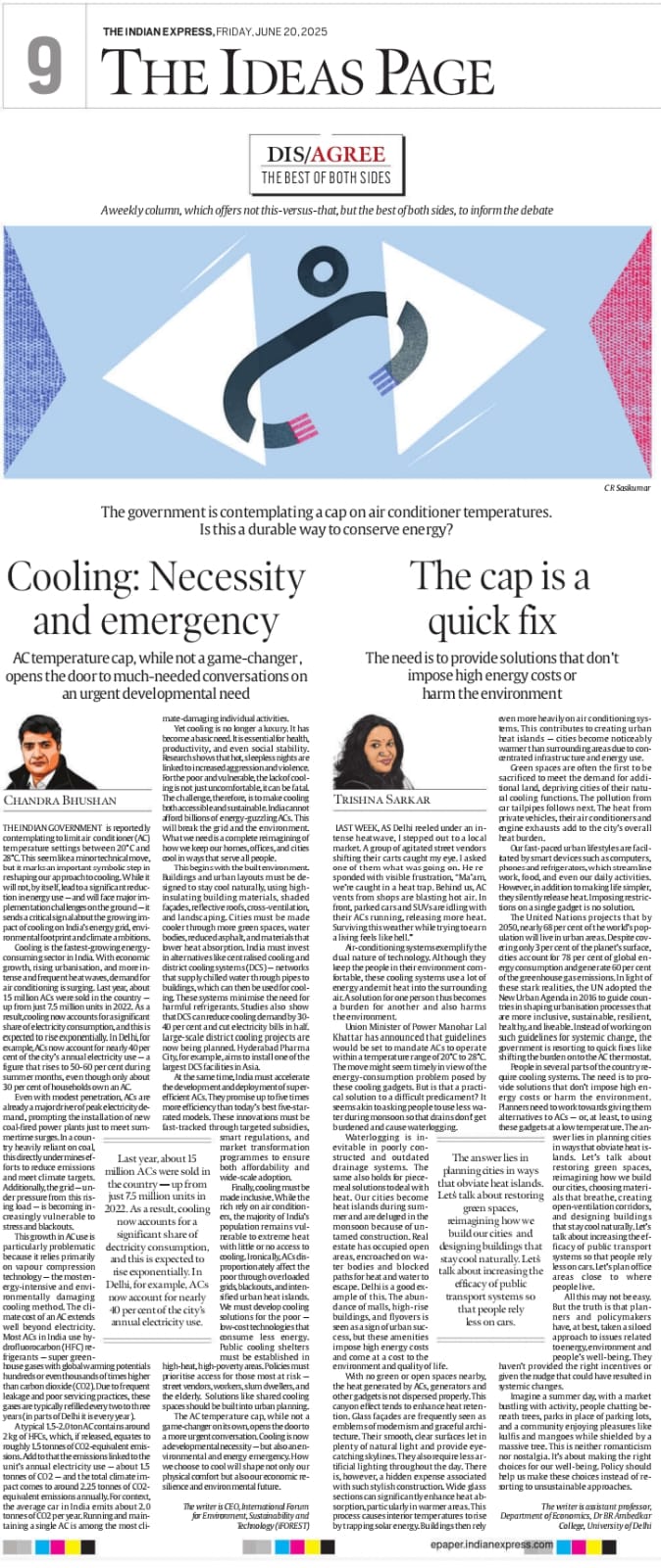World Ozone Day is a good reminder of what refrigerants used in millions of air-conditioners do to environment. Hydrofluorocarbons heat up earth even more than CO2
The ozone hole is healing. The layer that shields us from the sun’s deadly ultraviolet rays was severely damaged by chemicals like chlorofluorocarbons (CFCs) and hydrochlorofluorocarbons (HCFCs), once widely used as refrigerants in air-conditioners and refrigerators. Thanks to the Montreal Protocol, these chemicals will be phased out globally by 2030. Scientists now predict that the ozone layer will fully recover by 2066, saving millions of lives from skin cancer.
Yet, as one crisis recedes, another is fast unfolding—this time caused by the new refrigerants that replaced CFCs and HCFCs. The coolants we use today—hydrofluorocarbons (HFCs)—are hundreds of times more potent than carbon dioxide (CO₂) in heating the climate. And in India, we are leaking them recklessly from our room air-conditioners (RACs).
A cooling boom
The sale of RACs has been growing at 15–20% annually since 2020. Urbanization, rising incomes, and intensifying heatwaves have turned ACs from a middle-class luxury into a household necessity. India currently has about 70 million RACs. Even with modest annual sales growth of 10%, this number will triple to 245 million by 2035.
But how responsibly are we using and maintaining our ACs? How conscious are we about energy efficiency? How frequently are we refilling refrigerants? And how aware are we of their harmful impacts?
To find answers, my colleagues at iFOREST recently conducted a first-of-its-kind national household survey covering more than 3,100 families from all income groups across seven major cities—Delhi, Mumbai, Kolkata, Chennai, Ahmedabad, Pune, and Jaipur. The results are both fascinating and deeply worrying.
Perception vs. reality
The survey busted some long-held myths. For instance, the perception that most AC-owning households have multiple RACs is incorrect. Nearly 87% of such households own just one AC; only 13% have more than two. This shows that ACs are no longer limited to the wealthy. A large share is now in middle- and lower-income households.
Another myth is that Indians operate their ACs at freezing lows. The survey shows that the most preferred temperature setting across cities is 22–26°C, not the ultra-low levels we often assume. There is therefore little need for the government to mandate thermostat settings.
Encouragingly, Indian consumers are conscious about energy efficiency. Nearly 98% of households own 3-star to 5-star rated appliances, with the 3-star category dominating.
But these positives are overshadowed by one stark reality: the way we service our ACs is damaging for both the climate and consumer pockets.
Servicing equals refrigerant refill
In India, refrigerant leakage and refilling have reached crisis proportions. About 80% of ACs older than five years require refilling annually. Even one-third of newer ACs—less than five years old—are refilled every year. In effect, around 40% of all ACs in India are refilled annually. Ideally, ACs should need a refill only once in five years. In India, it happens every two to three years.
This unnecessary refilling comes at a steep cost. In 2024 alone, India’s ACs consumed 32 million kg of refrigerant. At an average cost of ₹2,200 per refill, households spent about ₹7,000 crore ($0.8 billion). If business continues as usual, the refilling bill will quadruple to nearly ₹27,500 crore ($3.1 billion) by 2035.
The environmental cost is even higher. HFC-32, the most widely used refrigerant in India, is 675 times more potent than CO₂ in trapping heat. In 2024, refrigerant leakage from ACs emitted greenhouse gases (GHGs) equivalent to 52 million tonnes (MT) of CO₂. By 2035, this will rise to 84 MT.
When we add emissions from electricity consumption, the total GHG emissions of India’s ACs in 2024 reached 156 MT—about the same as emissions from all passenger cars in the country. Put simply: the annual GHG emissions from an AC that is refilled every two years is as much as a car. By 2035, the total emissions from ACs are projected to double to 329 MT, making them the single largest GHG-emitting household appliance in India.
Policy without teeth
While India does have policies on refrigerant management, these are half-measures without strong enforcement. The India Cooling Action Plan aims to reduce refrigerant demand by 25–30% by 2037–38, but lacks regulations to back it. Similarly, the amended E-Waste (Management) Rules, 2023, include provisions for environmentally sound disposal of refrigerants from end-of-life ACs at approved facilities, but these are being poorly enforced.
Therefore, currently there are no effective systems to prevent leaks during servicing, no monitoring of refrigerant refills, and no accountability for end-of-life disposal. Unlike plastics or electronic waste, refrigerants do not fall under any meaningful Extended Producer Responsibility (EPR) framework in India.
A solvable crisis
The refrigerant leakage crisis is urgent—but it is solvable. India must establish a comprehensive Lifecycle Refrigerant Management (LRM) regulation covering every stage—from refrigerant filling to servicing to disposal. AC manufacturers should be made responsible under an EPR regime to ensure recovery, recycling, and safe destruction of refrigerants. Such regulations are being implemented by many countries including Canada, Australia, the EU, China and Singapore.
If implemented effectively, LRM could prevent 500–650 MT of GHG emissions between 2025 and 2035—worth $25–33 billion in carbon credits at a moderate price of $50 per tonne. Consumers too would benefit, saving over $10 billion in unnecessary refill costs. This is a win-win solution: lower household expenses, reduced refrigerant wastage, and significant climate gains.
India showed leadership in the fight to protect the ozone layer by phasing out CFCs and HCFCs well before global deadlines. We can lead once again, this time in protecting the climate.




